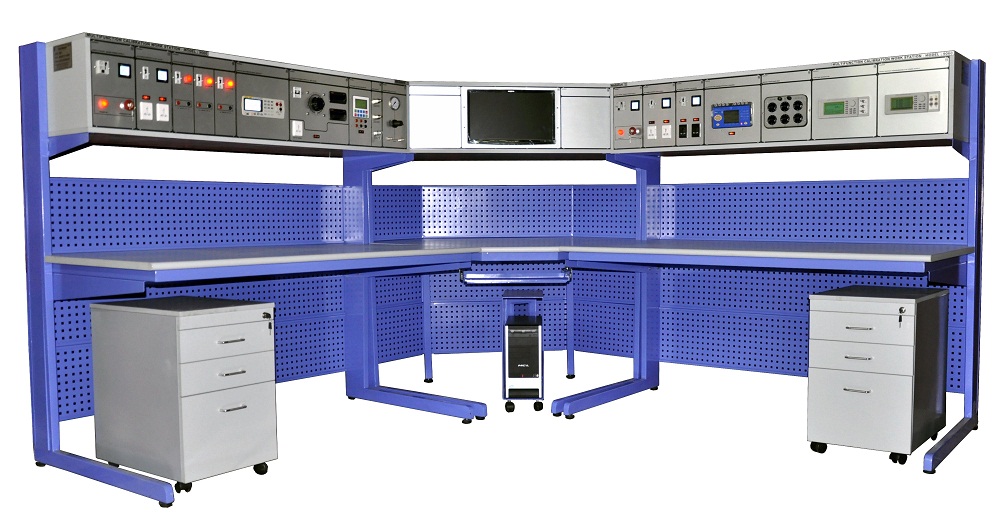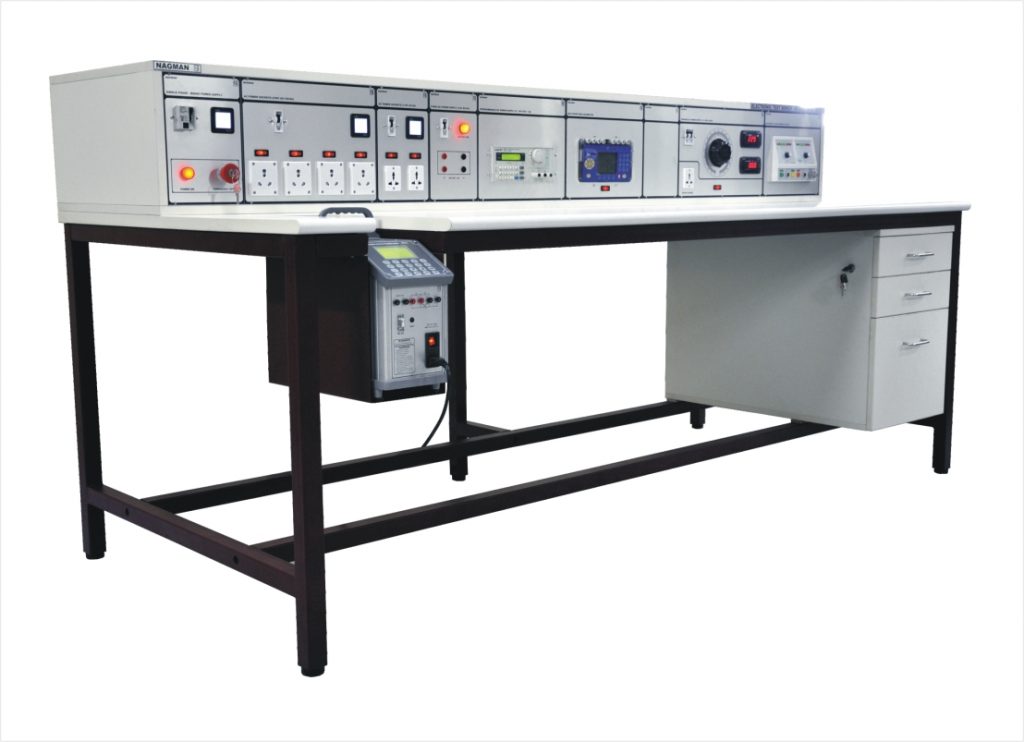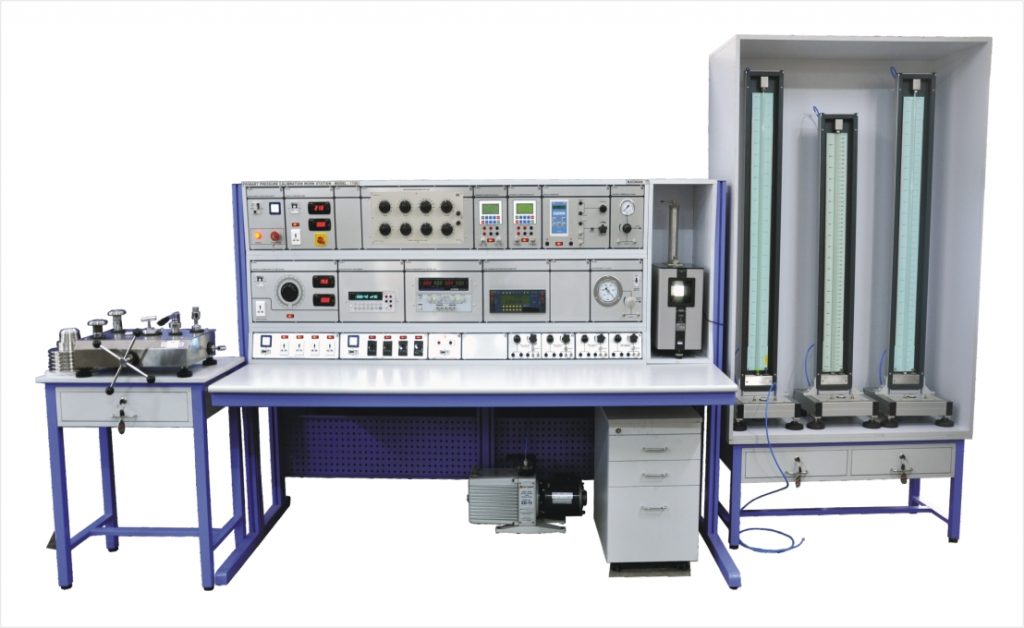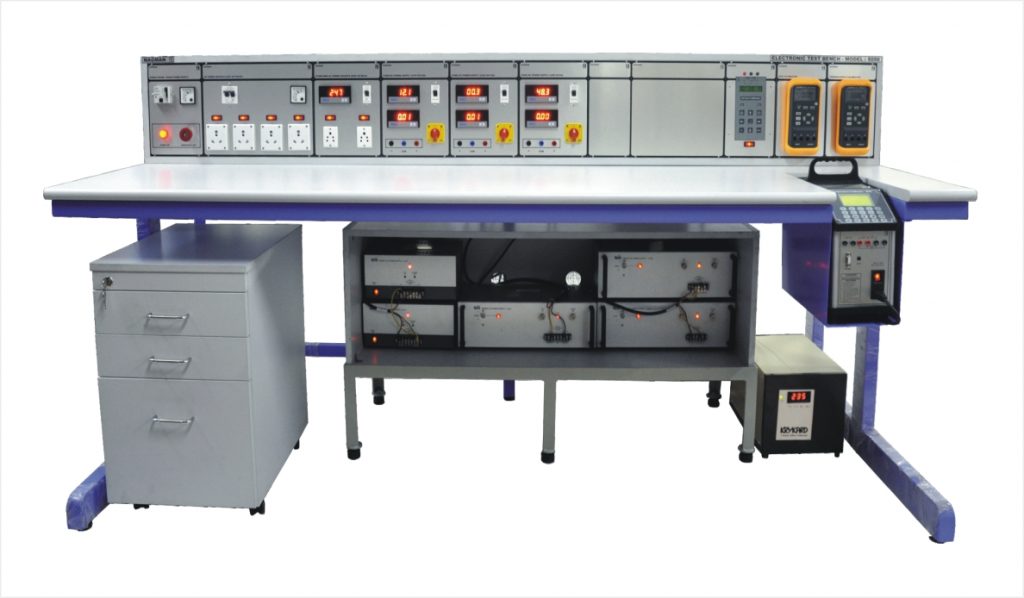Nagman’s wide range of Calibration Systems – Test Benches, Workstations, Bench-tops & Mobile Units – are designed & executed to serve as Powerful tools for
- Total Quality Management & ISO Conformance with Accuracies Traceable to International Standards
- Total Solution to all Calibration requirements
Thus, these serve as an Essential / Integral part of Centralised / Distributed (Site) Calibration / Testing / Q.C. Laboratory Setups in all types of Industries.
Nagman’s Calibration Systems – Test Benches, Workstations, Bench-tops & Mobile Units offer ultimate Flexibility through Custom Configuration / Preferences, enabling Incorporation/Integration of the World’s best – Furniture / Utility Modules / Calibration Standards and Test & Measuring Instruments
Corner Test Bench System
Nagman also offer Cost Effective / Economy / Budget Solution Calibration Test Benches / Workstations / Mobile Units / Bench-tops – a Complete & Comprehensive range, integrating / interfacing Nagman’s own time tested, proven Temperature / Pressure / Multifunction Calibrator modules, Power Supplies & other Utilities etc.

With the wide choice & a combination of Modules offered by Nagman, complete Calibration Systems for Dedicated / Single Parameter (Temperature / Pressure / Electrical & Electronics) or for Multiparameter – any combination of parameters can be Designed, Configured & “Built-up” to suit the Customer’s requirement.
Test Bench Designs include Elevated / Table-top Device Panels (Single / Dual Deck) with Movable Under-Bench Cabinets / Cupboards / Trolleys etc.
Temperature Calibration Test Bench
Hi-tech Next Generation “Multi-Flex” Range of Test Benches offer space-saving / multi-purpose “Push-Pull” (Electrically operated) Pop-in/Pop-out Device panels & Mounted Under-bench Trolleys.
Nagman also can offer only Bench-tops for Mounting on Customer Table / Furniture. Nagman offer – for Remote / Distributed Field / Site Calibration work Compact Mobile Units – a combination of Modules & Utilities mounted in a sturdy Trolley case.

Nagman can offer these Test Benches / Bench-tops – one or more – mounted in a Van or Container to serve as a “Mobile Calibration Lab” for Site / Field Calibration assignments. Calibration Accuracies (of Instrument Modules) are Traceable to International Standards & duly verified (where possible) (before integration) & Certified by Nagman’s NABL (equivalent to UKAS) Accredited – per ISO 17025:2005 – “Centre for Calibration”.
Corner Test Bench System
Nagman offers these Systems – optionally – with their powerful & unique Calibration Management Software – Calman Plus – interfacing / integrating the various Modules & enabling perform Calibration Routines Semi-automatically / Automatically. Advanced Version of CMS for uplinking to customer SAP System also available.
More than 1500 Systems are proving their mettle in industries & Projects Worldwide, thro’ continued good performance.

Eco-Frame: Basic / Economy Version – High quality / Heavy Duty (& Powder coated) 40 mm square tube fabricated 4 or 5 legged Frame construction
“C” Frame: Trendy, Ergonomic / ‘C’ Frame Design
Multi Function / Multi Parameter (Computer Aided) Calibration Test Bench
Metallic constructions, such as frames and angles are from degreased & phosphate treated Sheet Steel, protected with oven backed enamel paint, for better conductivity & dissipation of static charges, to ensure zero potential throughout the working surface.
Test Benches / Workstations are available in various dimensions, custom configurable (Lengths from 1000 upto 2400 mm x Depth 1000 mm x Height 800 mm), depending on modules fitted in Bench-top / Device Panel Units & to suit customers choice – possible to design & configure as per available space (area) of Customers’ Lab.

Perfect Space-saving concept :
Solutions for Space Saving “Corner Benches” – “L” shaped straight angle or with “Corner Working Area” – available as an option to house
- LCD Monitor in Bench-top
- Tools in perforated back panel
- CPU & Document Shelf under the Work Bench Cabinet to effectively use the Corner Space
Electrical & Electronics Calibration Test Bench
Multi-Flex: Electrically actuated ‘Pop-up’ Bench-tops & Space Saving Device Panels & ‘Push-Pull’ Under Bench Trolleys.
Bench-tops & Device Panels: Bench-tops are designed to be mounted either on top of the Workbench or in an Elevated position, with a perforated sheet panel at the bottom (to accommodate tools, components storage boxes etc.). One additional (laminated board top) is provided (optionally) over the Device Panels, to place Portable Standards etc.

Device Panels (Modular designs) are made up of a high-quality Aluminium metal sheet of 3 mm thick, specially crafted (according to the Modules) and a surface finished with Aluminium foil that gives an aesthetic look. The 19” chassis techniques permit changing the devices / Modules without any problems.
- Get link
- X
- Other Apps
- Get link
- X
- Other Apps
Comments
Post a Comment